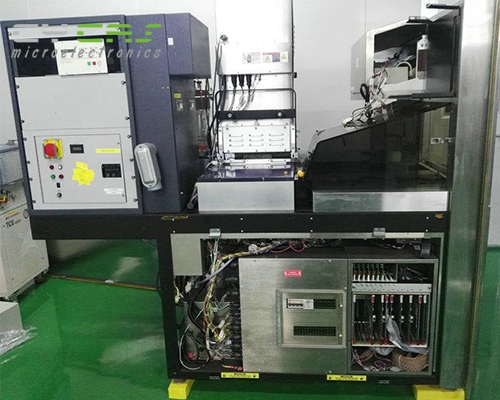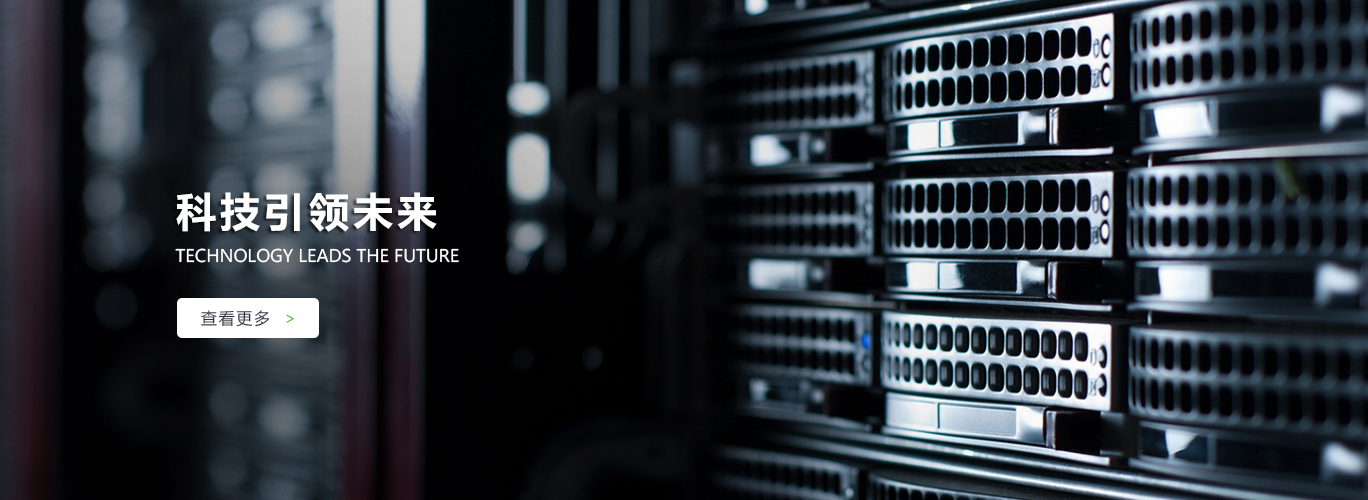新闻资讯
联系我们
名 称:苏州赛森电子科技有限公司
电 话:0512-58987901
传 真:0512-58987201
邮 箱:sales@cycas.com
地 址:江苏省张家港经济开发区福新路1202号 215600PRC
网 址:www.cycas.com
Name: Suzhou cycas Microelectronics Co., Ltd.
Tel.: 0512-58987901
Fax: 0512-58987201
Email: sales@cycas.com
Address: No.1202,Fuxin Road,Zhangjiagang Economic Development Zone,Jiangsu Province 215600PRC
Website: www.cycas.com
Application of plasma treatment machine in surface modification of materials等离子处理机在材料表面改性中的应用
Application of plasma treatment machine in surface modification of materials等离子处理机在材料表面改性中的应用
发布日期:2018-06-30 作者:www.cycas.com 点击:
低温等离子体中粒子的能量一般约为几个至几十电子伏特,大于聚合物材料的结合键能(几个至十几电子伏特),完全可以破裂有机大分子的化学键而形成新键;但远低于高能放射性射线,只涉及材料表面,不影响基体的性能。处于非热力学平衡状态下的低温等离子体中,电子具有较高的能量,可以断裂材料表面分子的化学键,提高粒子的化学反应活性(大于热等离子体),而中性粒子的温度接近室温,这些优点为热敏性高分子聚合物表面改性提供了适宜的条件。
一、形成装置及影响因素
选择适宜的放电方式可获得不同性质和应用特点的等离子体,通常,热等离子体是气体在大气压下电晕放电产生,冷等离子体由低压气体辉光放电形成。热等离子体装置是利用带电体尖端(如刀状或针状尖端和狭缝式电极)造成不均匀电场,称电晕放电,使用电压和频率、电极间距、处理温度和时间对电晕处理效果都有影响。电压升高、电源频率增大,则处理强度大,处理效果好。但电源频率过高或电极间隙太宽,会引起电极间过多的离子碰撞,造成不必要的能量损耗;而电极间距太小,会有感应损失,也有能量损耗。处理温度较高时,表面特性的变化较快。处理时间延长,极性基团会增多;但时间过长,表面则可能产生分解物,形成新的弱界面层。
冷等离子体装置是在密封容器中设置两个电极形成电场,用真空泵实现一定的真空度,随着气体愈来愈稀薄,分子间距及分子或离子的自由运动距离也愈来愈长,受电场作用,它们发生碰撞而形成等离子体,这时会发出辉光,故称为辉光放电处理。辉光放电时的气压大小对材料处理效果有很大影响,另外与放电功率,气体成分及流动速度、材料类型等因素有关。
等离子刻蚀机不同的放电方式、工作物质状态及上述影响等离子体产生的因素,相互组合可形成各种低温等离子体处理设备。

二、在表面改性中的应用
低温等离子体技术具有工艺简单、操作方便、加工速度快、处理效果好、环境污染小、节能等优点,在表面改性中广泛的应用。
1. 表面处理
通过低温等离子体表面处理,材料表面发生多种的物理、化学变化,或产生刻蚀而粗糙,或形成致密的交联层,或引入含氧极性基团,使亲水性、粘结性、可染色性、生物相容性及电性能分别得到改善。
用几种常用的等离子体对硅橡胶进行表面处理,结果表明N2、Ar、O2、CH4-O2及Ar-CH4-O2等离子体均能改善硅橡胶的亲水性,其中CH4-O2和Ar-CH4-O2的效果更佳,且不随时间发生退化。英国派克制笔公司将等离子体技术用于控制墨水流量塑料元件的改性工艺中,提高了塑料的润湿率。
上述表明,用低温等离子体在适宜的工艺条件下处理PE、PP、PVF2、LDPE等材料,材料的表面形态发生的显著变化,引入了多种含氧基团,使表面由非极性、难粘性转为有一定极性、易粘性和亲水性,有利于粘结、涂覆和印刷。
塑料、橡胶、纤维等高分子材料在成形过程中加入的增塑剂、引发剂及残留单体和降解物等低分子物质很容易析出而汇集于材料表面,形成无定形层,使润湿性等性能变差。尤其对医用材料,低分子物渗出会影响到生物机体的正常功能。低温等离子体技术可在高分子材料表面形成交联层,成为低分子物渗出的屏障。
2. 表面聚合
大多数有机物气体在低温等离子体作用下,聚合并沉积在固体表面形成连续、均匀、无针孔的超薄膜,可用作材料的防护层、绝缘层、气体和液体分离膜以及激光光导向膜等,应用于光学、电子学、医学等许多领域。
以聚甲基丙烯酸甲酯或聚碳酸酯塑料均可制成价廉且易于加工的光学透镜,但其表面硬度太低,易产生划痕。采用有机氟或有机硅单体,采用低温等离子体聚合技术在透镜表面沉积出10nm的薄层,可改善其抗划痕性和反射指数。国外还有等离子体化学气相沉积技术应用于塑料窗用玻璃、汽车百叶窗和氖灯、卤天灯的反光镜的报道。
等离子体聚合膜具有多种性能,可使同样的基材应用于很多领域。在金属和塑料上涂类金刚石碳耐磨涂料的化学气相沉积技术是把含碳气体导入等离子体中,该涂层耐化学药品、无针孔、不渗透,能防止各种化学药品侵蚀基材。同样还可将减摩涂料涂于挡风玻璃雨刮器上,或将低摩涂层涂于计算机磁盘上以降低磁头磁撞。
等离子聚乙烯膜沉积于硅橡胶表面后,硅橡胶对氧气的透过系数明显降低。由含氮单体制备反渗透膜,最高可阻出98%的食盐。生物体内的缓释药物一般采用高分子微囊,亦可采用等离子体聚合技术在微囊表面形成反渗透膜层。
等离子体聚合物膜在传感元件上的应用研究表明,放电功率等因素对膜电阻值有较大影响。用各种乙烯基单体和Ar辉光放电处理织物,其疏水性及染色性能在极短时间里便有改善。
3. 表面接枝
以等离子体接枝聚合进行材料表面改性,接枝层同表面分子以共价键结合,可获得优良、耐久的改性效果。美国曾将聚酯纤维进行辉光放电等离子体处理与丙烯酸接枝聚合,改性后纤维吸水性大幅度提高,同时抗静电性能也有改善。白敏冬等用Ar等离子体处理尼龙绸表面,引入丙烯酸,接枝聚合使尼龙绸抗静电性增强。低温等离子体接枝改性毛织物原料及成品,可改善毛绒表面性能、增强着色性、软化织物、降低缩水率,且毛织物本体不受影响。涤纶纤维坚固耐穿,但其结构紧密、吸水性差、难染色,王雪燕等用低温氮等离子体引发丙烯酰胺对涤纶织物进行接枝改性,接枝后涤纶织物的上染百分率、染色深度及亲水性都有明显提高。
低温等离子体对医用材料表面处理,可引入氨基、羰基等基团,生物活性物质与这些基团接枝反应可固定于材料表面。用等离子体处理聚丙烯膜,引入氨基,再通过共价键接枝,固定上葡萄糖氧化酶,经测定,接枝率分别达52μg/cm2和34μg/cm2。
The energy of particles in low-temperature plasma is about several to dozens of electron volts, which is larger than the bond energy of polymer materials (several to dozens of electron volts). It can break the chemical bond of organic macromolecules and form new bond completely. However, it is far lower than high-energy radioactive rays, which only involves the surface of materials and does not affect the performance of matrix. In the non thermodynamic equilibrium low temperature plasma, electrons have high energy, can break the chemical bonds of the molecules on the surface of the material, improve the chemical reaction activity of the particles (greater than that of the thermal plasma), and the temperature of the neutral particles is close to room temperature, which provides suitable conditions for the surface modification of the thermal sensitive polymer.
1. Forming device and influencing factors.
Plasma with different properties and application characteristics can be obtained by choosing appropriate discharge mode. Generally, hot plasma is produced by corona discharge of gas at atmospheric pressure, while cold plasma is formed by glow discharge of low-pressure gas. The hot plasma device uses the tip of the charged body (such as knife or needle tip and slit electrode) to create an uneven electric field, which is called corona discharge. The use voltage and frequency, electrode spacing, treatment temperature and time have an impact on the corona treatment effect. With the increase of voltage and power frequency, the treatment intensity is high and the treatment effect is good. However, if the power frequency is too high or the electrode gap is too wide, it will cause excessive ion collision between the electrodes, resulting in unnecessary energy loss; if the electrode gap is too small, there will be induction loss and energy loss. When the treatment temperature is higher, the change of surface properties is faster. If the treatment time is prolonged, the polar groups will increase, but if the treatment time is too long, the decomposition products may be produced on the surface, forming a new weak interface layer. In the cold plasma device, two electrodes are set in the sealed container to form an electric field, and a certain degree of vacuum is achieved by using a vacuum pump. With the gas becoming thinner and thinner, the molecular spacing and the free movement distance of molecules or ions become longer and longer. Under the action of the electric field, they collide to form a plasma, which will emit glow, so it is called glow discharge treatment. In addition, it is related to discharge power, gas composition, flow rate and material type. Different discharge mode, working material state and the above factors that affect the production of plasma can be combined to form a variety of low-temperature plasma processing equipment.
2、 The application of low temperature plasma technology in surface
1. Surface treatment:
Through low-temperature plasma surface treatment, a variety of physical and chemical changes take place on the surface of the material, or etching and rough, or forming a dense cross-linking layer, or introducing oxygen-containing polar groups, so that the hydrophilicity, cohesiveness, dyeability, biocompatibility and electrical properties are improved respectively. The surface of silicone rubber was treated by several kinds of plasma. The results showed that N2, AR, O2, ch4-o2 and ar-ch4-o2 plasma could improve the hydrophilicity of silicone rubber, among which ch4-o2 and ar-ch4-o2 had better effect and did not degrade with time. The plasma technology is used in the modification process of plastic components to control ink flow by Parker pen company in the UK, which improves the wettability of plastics. The above results show that the surface morphology of PE, PP, PVF2, LDPE and other materials changes significantly when treated with low temperature plasma under suitable process conditions, and a variety of oxygen-containing groups are introduced to make the surface change from nonpolarity and difficult viscosity to a certain polarity, easy viscosity and hydrophilicity, which is conducive to bonding, coating and printing. Plasticizers, initiators, residual monomers and degradation products and other low molecular substances added in the forming process of polymer materials such as plastics, rubber and fibers are easy to separate out and gather on the surface of the material, forming an amorphous layer, making the wettability and other properties worse. Especially for medical materials, low molecular exudation will affect the normal function of biological body. Low temperature plasma technology can form cross-linking layer on the surface of polymer materials, and become the barrier of low molecular exudation.
2. Surface polymerization:
Most organic gases are polymerized and deposited on the solid surface under the action of low-temperature plasma to form a continuous, uniform, pinhole free ultrathin film, which can be used as the protective layer, insulating layer, gas and liquid separation membrane of materials, laser photoconductive membrane, etc., and applied in many fields such as optics, electronics, medicine, etc. The cheap and easy to process optical lens can be made of PMMA or polycarbonate plastic, but its surface hardness is too low, which is easy to produce scratches. The scratch resistance and reflection index of the lens can be improved by depositing a thin layer of 10nm on the surface of the lens with organic fluorine or organosilicon monomer and low temperature plasma polymerization technology. There are also reports abroad on the application of plasma chemical vapor deposition technology to the mirrors of glass for plastic windows, automobile shutters, neon lamps and halogen lamps. Plasma polymerized film has many properties, which can make the same substrate applied in many fields. The chemical vapor deposition technology of diamond-like carbon wear-resistant coating on metals and plastics is to introduce the carbon containing gas into the plasma. The coating is resistant to chemicals, no pinholes, no penetration, and can prevent all kinds of chemicals from eroding the substrate. It can also apply antifriction coating to windshield wipers or low friction coating to computer disks to reduce head magnetic impact. When the plasma polyethylene film is deposited on the surface of silicone rubber, the permeability of silicone rubber to oxygen decreases obviously. The reverse osmosis membrane was prepared from nitrogen-containing monomers, which could block 98% salt at most. In vivo, polymer microcapsules are generally used for sustained-release drugs, and plasma polymerization technology can also be used to form reverse osmosis film on the surface of microcapsules. The study on the application of plasma polymer film to the sensor shows that the discharge power and other factors have a great influence on the film resistance. The hydrophobicity and dyeing properties of fabrics treated with various vinyl monomers and AR glow discharge were improved in a very short time.
3. Surface grafting
The surface of the material was modified by plasma grafting polymerization, and the grafted layer was covalently bonded with the surface molecules, which could obtain excellent and durable modification effect. In the United States, polyester fibers were treated by glow discharge plasma and grafted with acrylic acid. The water absorption and antistatic properties of the modified fibers were greatly improved. The surface of nylon silk was treated by Ar plasma, acrylic acid was introduced, and the antistatic property of nylon silk was enhanced by graft polymerization. The raw materials and finished products of wool fabric modified by low temperature plasma grafting can improve the surface properties of wool, enhance the coloring, soften the fabric, reduce the shrinkage, and the body of wool fabric is not affected. The polyester fiber is strong and durable, but its structure is tight, its water absorption is poor, and it is difficult to dye. Wang Xueyan et al. Initiated by low temperature nitrogen plasma, acrylamide grafted polyester fabric. The dye uptake, dyeing depth and hydrophilicity of the grafted polyester fabric are obviously improved.
Groups such as amino group and carbonyl group can be introduced into the surface treatment of medical materials by low temperature plasma. The polypropylene membrane was treated by plasma, amino group was introduced, then grafted by covalent bond, glucose oxidase was fixed on the membrane. The grafted rate was 52 μ g / cm2 and 34 μ g / cm2, respectively.
本文网址:http://www.cycas.com/news/399.html
相关标签:等离子刻蚀机
最近浏览:
相关产品:
相关新闻:
- 等离子体表面处理的技术及应用Technology and application of plasma surface treatment
- A complete set of equipment for surface modification, surface activation, etching and nano coating of plasma cleaning machine等离子体清洗机表面改性、表面活化、刻蚀、纳米涂层一台设备全搞定
- 等离子清洗机在手机行业中的应用Application of plasma cleaning machine in mobile phone industry
- 等离子体表面处理的原理Principle of plasma surface treatment
- 等离子表面处理技术也具有以下优势Plasma surface treatment technology also has the following advantages
- A complete set of equipment for surface modification, surface activation, etching and nano coating of plasma cleaning machine等离子体清洗机表面改性、表面活化、刻蚀、纳米涂层一台设备全搞定 A complete set of equipment for surface modification, surface activation, etching and nano coating
- 怎么选等离子清洗机设备厂商呢?How to choose plasma cleaning equipment manufacturers?
- 真空等离子清洗原理Principle of vacuum plasma cleaning
- 等离子清洗机效果如何评估 How to evaluate the effect of plasma cleaning machine?
- 真空等离子清洗产品特点Characteristics of vacuum plasma cleaning products

